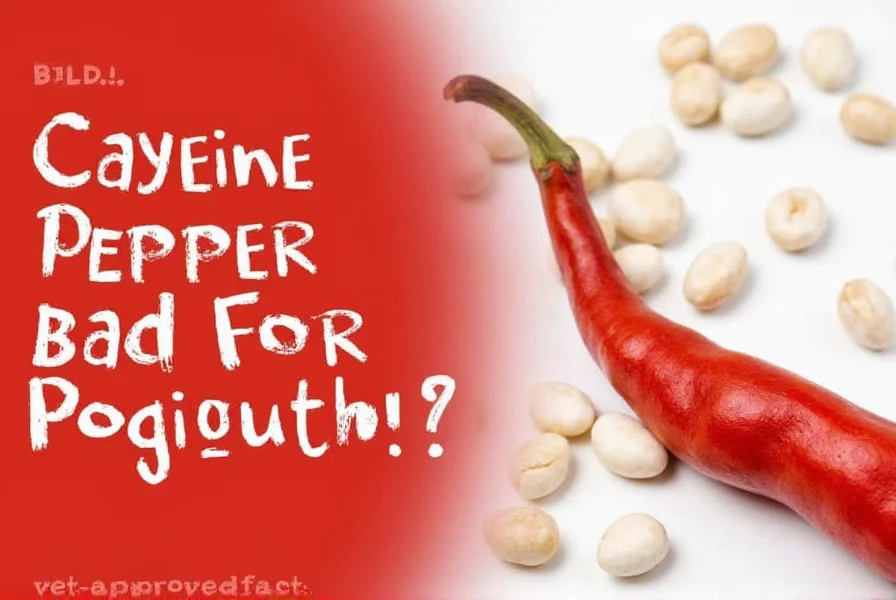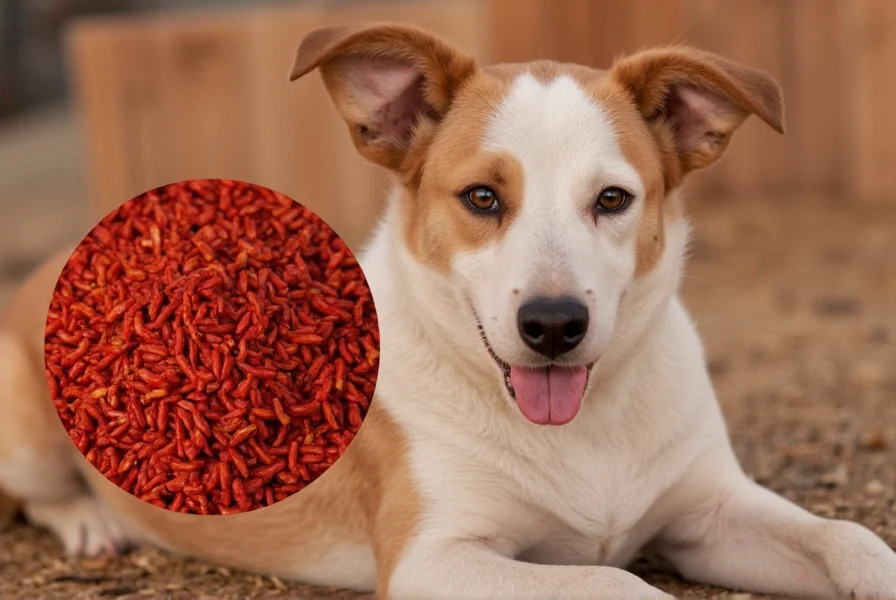Yes, cayenne pepper is generally bad for dogs. The active compound capsaicin found in cayenne pepper causes significant irritation to dogs' eyes, nose, throat, and digestive system. While not usually fatal in small amounts, cayenne pepper exposure can lead to painful symptoms including vomiting, diarrhea, excessive drooling, and respiratory distress. Veterinary experts consistently advise against exposing dogs to cayenne pepper due to their heightened sensitivity compared to humans.
When considering is cayenne pepper bad for dogs, the answer is clear: this common spice poses multiple health risks to our canine companions. Dogs' physiology makes them particularly vulnerable to capsaicin, the compound that gives cayenne its heat. Unlike humans who can build tolerance to spicy foods, dogs lack this adaptation and experience intense discomfort from even small exposures.
Why Cayenne Pepper Harms Dogs
The fundamental issue lies in dogs' biological differences from humans. Canine digestive systems aren't designed to process capsaicin, which triggers pain receptors throughout their bodies. When dogs encounter cayenne pepper, they experience:
- Immediate burning sensation in mouth and throat
- Irritation of mucous membranes in nose and eyes
- Disruption of normal digestive processes
- Potential respiratory distress from inhalation
Research shows that dogs' pain receptors respond more intensely to capsaicin than humans'. This explains why what happens if dog eats cayenne pepper typically involves significant discomfort rather than just mild irritation.
Symptoms of Cayenne Pepper Exposure in Dogs
Dog owners should recognize these warning signs following cayenne pepper exposure:
| Symptom Severity | Physical Symptoms | Timeline |
|---|---|---|
| Mild Exposure | Excessive drooling, pawing at mouth, temporary loss of appetite | Immediate to 1 hour |
| Moderate Exposure | Vomiting, diarrhea, whimpering, avoidance of food/water | 30 minutes to 4 hours |
| Severe Exposure | Bloody vomit/diarrhea, difficulty breathing, collapse | 15 minutes to 2 hours |
Understanding cayenne pepper effects on dogs helps owners respond appropriately. Mild symptoms may resolve within 12-24 hours with supportive care, while severe reactions require immediate veterinary intervention.

Immediate Actions for Cayenne Pepper Exposure
If your dog encounters cayenne pepper, follow these evidence-based steps:
- Rinse mouth gently with cool water (never force water)
- Offer small amounts of milk or yogurt to help neutralize capsaicin
- Wipe exposed skin or eyes with damp cloth
- Monitor closely for worsening symptoms
- Contact your veterinarian if symptoms persist beyond 2 hours
Never induce vomiting unless specifically instructed by a veterinary professional. The dog ate cayenne pepper what to do protocol focuses on comfort and monitoring rather than aggressive intervention for mild cases.
Common Sources of Accidental Exposure
Dog owners often don't realize these everyday items contain cayenne pepper:
- Natural pest repellents (for squirrels, rabbits, or insects)
- Some organic gardening products
- "Hot" dog training sprays (marketed as deterrents)
- Human food leftovers containing spicy ingredients
- Certain homemade cleaning solutions
This explains why many cayenne pepper dog safety incidents occur unintentionally. Always check product labels for capsaicin or cayenne derivatives when using household products around pets.
Safe Alternatives to Cayenne Pepper
For those seeking natural solutions for common dog issues, consider these vet-approved alternatives:
- For pest control: Citrus-based repellents (dogs tolerate citrus better than capsaicin)
- For training: Bitter apple spray (specifically formulated for canine use)
- For garden protection: Physical barriers rather than chemical deterrents
- For minor skin irritations: Veterinarian-recommended topical treatments
When exploring natural repellents safe for dogs, always consult your veterinarian first. What seems harmless to humans may still pose risks to dogs due to their different physiology.

When Professional Help Is Necessary
Seek immediate veterinary care if your dog shows:
- Blood in vomit or stool
- Difficulty breathing or excessive panting
- Signs of dehydration (sunken eyes, dry gums)
- Unresponsiveness or collapse
- Symptoms lasting longer than 12 hours
Veterinarians may administer medications to soothe irritated tissues, provide hydration support, and monitor for complications. Early intervention prevents minor spicy food dangers for dogs from becoming serious health issues.
Prevention Strategies for Dog Owners
Protect your canine companion with these practical measures:
- Store spices securely out of reach (dogs can jump and open cabinets)
- Avoid using cayenne-based products in areas accessible to dogs
- Educate family members about cayenne pepper toxicity in dogs
- Supervise dogs during outdoor activities where natural repellents might be used
- Read all product labels carefully before bringing items into your home
Prevention remains the most effective approach to avoiding is cayenne pepper toxic to dogs incidents. Creating a dog-safe environment requires awareness of potential hazards that might seem harmless to humans.
Can a small amount of cayenne pepper kill a dog?
While extremely rare, lethal outcomes from cayenne pepper alone are unlikely in healthy adult dogs. However, small amounts can cause severe distress, and dogs with pre-existing conditions may experience dangerous complications. The primary risk comes from secondary issues like dehydration from prolonged vomiting rather than direct toxicity.
How long do cayenne pepper symptoms last in dogs?
Most mild symptoms resolve within 12-24 hours with proper care. Digestive upset typically improves within 6-12 hours, while eye or skin irritation may last up to 24 hours. Severe reactions requiring veterinary intervention might take several days to fully resolve, depending on the exposure level and the dog's overall health.
Are some dog breeds more sensitive to cayenne pepper?
Yes, brachycephalic breeds (like Bulldogs and Pugs) face higher risks due to their shortened airways, which can worsen respiratory distress from capsaicin exposure. Small breeds also experience more severe effects from the same exposure amount due to their lower body weight. Puppies and senior dogs generally have less resilience to irritants than healthy adult dogs.
Can cayenne pepper be used safely as a dog deterrent?
Veterinary professionals strongly advise against using cayenne pepper as a dog deterrent. While marketed in some training products, the discomfort it causes constitutes animal distress. Effective, humane alternatives exist that don't cause pain or potential health complications. Positive reinforcement training methods prove more effective and safer for long-term behavior modification.
What should I do if my dog gets cayenne pepper in their eyes?
Immediately flush your dog's eyes with lukewarm water for 10-15 minutes, holding their head downward to prevent swallowing runoff. Use a clean cloth to gently wipe away excess pepper. Do not use milk or oils, as these can trap irritants. Contact your veterinarian immediately, as eye exposure can cause corneal damage requiring professional treatment. Keep your dog from rubbing their eyes, which could worsen the injury.
Understanding the risks associated with cayenne pepper helps dog owners create safer environments for their pets. While occasional minor exposures might not cause permanent harm, the potential for significant discomfort and complications makes avoiding cayenne pepper entirely the wisest approach for responsible pet care.











 浙公网安备
33010002000092号
浙公网安备
33010002000092号 浙B2-20120091-4
浙B2-20120091-4